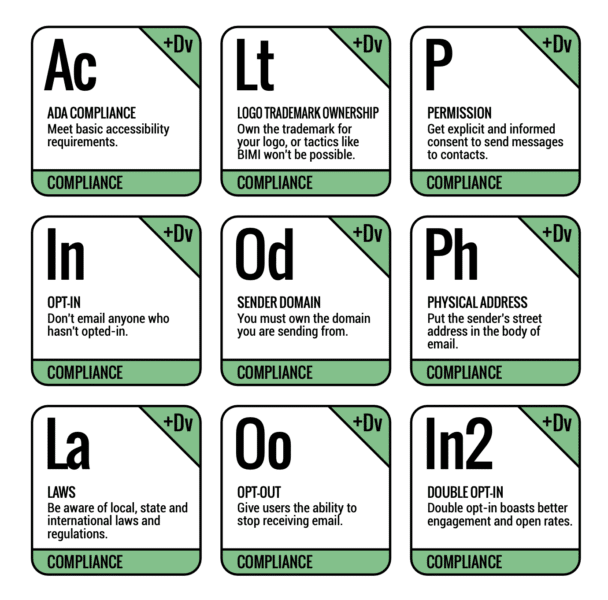This is not a channel-ending event for email. Clicks and associated behavior on the website are better indicators of intent.
The best news to come out of “Pixelgeddon” – also known as Apple’s Mail Privacy Protection feature, which went into effect on Monday, Sept. 20 – is that I will never have to listen to another conference speaker tell his audience, “It’s all about the opens.”
As of Monday, the thing many email marketers have dreaded – iOS 15 – has launched, which will nullify tracking on emails opened by Apple Mail users and makes the open rate even less reliable.
It’s a day of rejoicing for me and for other email folks who have advised marketers for years not to over-value the open rate. It also fulfills the warnings made long ago when fewer people were listening.
First, a moment of silence for the open rate
I can remember how people were taken aback by Loren McDonald’s open-rate rant from way back in 2008, Why the Open Rate Must Die. I’ve tackled the same issue here on MarTech, most recently several weeks ago in Losing open tracking will not kill email.
As I said then and still believe, this is not a channel-ending event for email, and I am not crying over the change. It’s not the same as the clamor over Y2K as some have claimed.
Yes, we’ll feel some pain. Many of our B2B and B2C clients are facing challenges now because they depend on open to confirm actions or show legitimate intent. Those instances are the unfortunate consequences of Apple’s move. It’s irresponsible for Apple to assume that all tracking pixels are intrusive.
If this were a case brought to Marketing Court, the judge would rule that there are some legitimate uses for open tracking, IP resolution and the rest of the elements that have been impacted.
For other marketers, the open rate is a metric they clung to since it was first introduced at the dawn of HTML email.
If you’ve been in email that long, you remember those days, right? That was when AOL was still dial-up, you had to code AOL HTML and normal HTML separately, and the open rate was the intent signal we longed for and didn’t get with plain-text email.
Why we needed to kick the open-rate habit
It comes down to tactics versus strategy.
Tactically, opens fueled automations and inferring intent. But strategically, we know deep down in the confessional at the Marking Automation church that the open rate (for the most part) doesn’t mean anything. From a strategic standpoint, clicks and associated behavior on the website are better indicators of intent than opens.
I don’t care if someone opens my emails. I know, I know – that’s a shocking statement. But I hit my KPIs when customers click or convert. I don’t get a bonus on opens. Our clients succeed on clicks and conversions.
My goal is the next level higher in intent: the click.
Workarounds waste time
But ever since Apple announced changes that would render the open rate essentially useless, people have been grasping at straws, trying to save opens with hacks and workarounds. That’s a waste of time.
It’s like Tiger Woods’ famous quote after he misses a shot: “You hit a bad shot, you have to get over it right there and then so you can get focused on the next one.”
So how do we readjust our tactical mindset into strategic thinking? That’s the question I have been answering for years, on conference stages, in columns like this one and in one-on-ones with clients.
Strategy – the “why” of doing something – is more powerful than the tactics, which are the “how.” Now the work begins, to shift away from tactic-first thinking.
3 steps to reorient your tactical mindset to strategic thinking
1. Fight the urge to start with tactics.
When I start working with a client on a problem, the first thing I do is not figuring out how to solve it. Instead, I ask, “Why should we? What does it matter? What’s the strategic benefit to solve this challenge?”
Changing your mindset is fighting an addiction – the addiction to solving a problem and moving on. It’s hard to do. I find myself slipping into a tactical mindset, and I have to stop and reorient my thinking.
A lot of this comes out in how we see the world. The main reason people get promoted is being able to think strategically. Smart people can look beyond the tactics to see the strategic path.
2. Read up on strategy, not tactics.
How-to guides are everywhere. Strategy is harder to cram into a 10-minute YouTube video, 750 words in an industry newsletter or a 20-minute conference session.
So you have to turn to books that deal with strategic thinking and planning. I recommend titles by my fellow MarTech writer Kath Pay, Kevin Ryan and Rob Graham, Guy Kawasaki, even Gary Vaynerchuk.
Related: How testing can give your email marketing a conversions boost
These authors will help you shift your cultural mindset as well. Surround yourself with articles and information that comes from new perspectives.
3. Start the change today.
Having promoted strategy over tactics until now, I’m going to remind you that we’re heading into the final quarter of the year and the holiday shopping season. This time is all about the tactics you developed to carry out your strategy..
When I worked for ESPs running strategy teams, I was bored from October to January. People didn’t need my strategic help. They were all in execution mode.
But being immersed in tactical execution doesn’t let you off the hook for strategic thinking. How many of you have planned your strategy for 2022? I’m not talking about budget-planning because your budget is probably being worked on right now.

Everything you need to know about email marketing deliverability that your customers want and that inboxes won’t block. Get MarTech’s Email Marketing Periodic Table.
Have you figured out the “why” of what you’re doing next year? Met with your team in strategy sessions? Developed new approaches with the new insights you have gleaned over the last year? Pulled new customer data sets?
Don’t wait until January to begin this. It all starts today. Apple’s privacy changes are here. You can get on board now or wait for the open rate to come back as a usable metric. (Tip: It won’t. so don’t waste any more time trying to hack it.)
Wrapping up
Yes, this is a rah-rah for thinking strategically. It takes a lot of time and work to achieve a mindset shift. Change is hard, I know. But if we don’t take a more strategic approach to email or any other digital channel, then the next big change will once again paralyze us because we didn’t see it coming.
No, Loren and I didn’t predict Apple’s policy changes. But we are vindicated in our insistence that marketers stop obsessing over open rates as indicators of intent. You might not think so today, but Apple has done us a favor. Now let’s strategize for our next moves.


Recent Comments